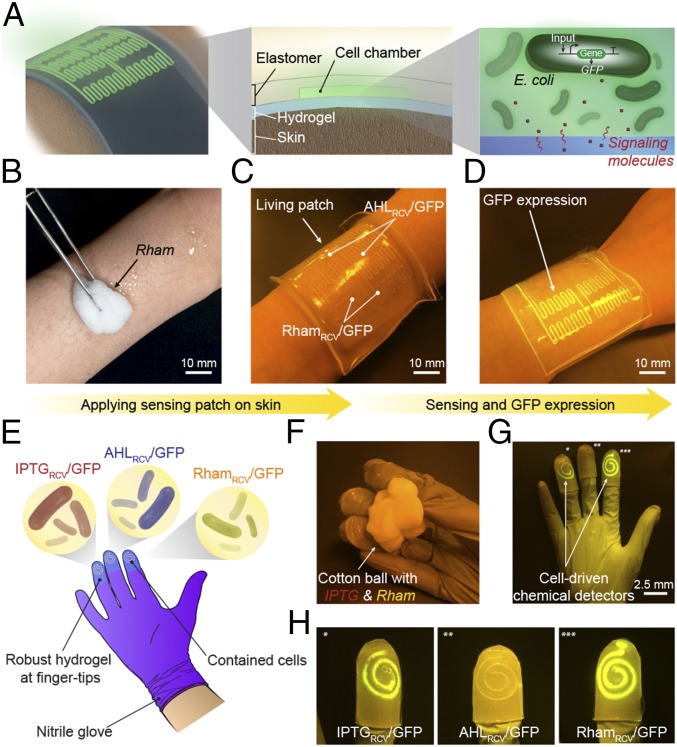Fig. 4.
Living wearable devices. (A) Schematic illustration of a living patch. The patch adhered to the skin with the hydrogel side, and the elastomer side was exposed to the air. Engineered bacteria inside can detect signaling molecules. (B–D) Rham solution was smeared on skin, and the sensor patch was conformably applied on skin. The channels with RhamRCV/GFP in the living patch became fluorescent, whereas channels with AHLRCV/GFP did not show any differences. Scale bars are shown in images. (E) Schematic illustration of a glove with chemical detectors robustly integrated at the fingertips. Different chemical-inducible cell strains, including IPTGRCV/GFP, AHLRCV/GFP, and RhamRCV/GFP, were encapsulated in the chambers. (F–H) When the living glove was used to grab a wet cotton ball containing the inducers, GFP fluorescence was shown in the cognate sensors IPTGRCV/GFP (*) and RhamRCV/GFP (***) on the gloves. In contrast, the noncognate sensor AHLRCV/GFP (**) did not show any fluorescence. Scale bars are shown in images.

